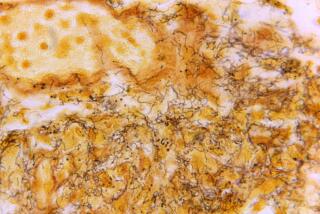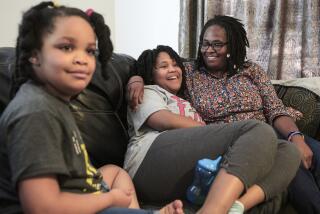More Cases of Autism Reported
The first national survey of autism incidence confirms the widely held belief that the debilitating disorder has become widespread, afflicting an estimated 300,000 U.S. schoolchildren -- about one in every 175.
The new estimates contrast sharply with estimates of one in every 2,000 children that were commonly used two decades ago, and there has been great controversy about whether the higher prevalence reflects a sharply increased rate of the disorder, better detection or over-diagnosis.
Autism and its related developmental disorders “are an urgent public health issue that affect the lives of many, many families,” Dr. Jose Cordero of the Centers for Disease Control and Prevention said Thursday in releasing the new figures. “The cost is in the billions of dollars.”
The new results are not surprising, said Dr. Melissa Nishawala, an autism specialist at the New York University School of Medicine.
“These numbers are not so different from the one in 166 that has been in use for a long time,” she said, adding that they are also comparable to those produced in a recent large British study.
The new study, reported Thursday in the CDC’s Morbidity and Mortality Weekly Report, does not address the causes of autism or trends in incidence.
Instead, it is “simply a snapshot of the world at a given point of time: 2003 and 2004,” said Cordero, director of the CDC’s National Center on Birth Defects and Developmental Disabilities.
Autism is a severe developmental disorder in which children seem isolated from the world around them. There is a broad spectrum of symptoms, marked by poor language skills and an inability to handle social relations. No cure exists, but many problems can be alleviated with intensive behavioral therapy.
Some autism advocacy groups have argued that the measles-mumps-rubella vaccine and the use of mercury as a preservative in a variety of childhood vaccines are responsible for the growing number of cases. But most studies have failed to confirm such a link, and the cause of the increase remains a mystery.
The new results were obtained from two separate telephone surveys, conducted during the same period, involving more than 125,000 randomly chosen families throughout the country. Parents were asked if their children between the ages of 4 and 17 had ever been diagnosed with autism.
The two studies found a remarkably similar incidence, said CDC epidemiologist Laura Schieve: 5.5 cases per 1,000 children in one study and 5.7 per 1,000 in the second. That translates to one in 181 children and one in 175, respectively. There were no statistically significant differences among age groups.
Boys were four times as likely as girls to have the disorder, according to the CDC report. The overall numbers included black and white children. The only ethnic group that was singled out was Latinos, who had about half the prevalence -- possibly because of decreased recognition of symptoms among Latino parents, Schieve said.
“This just continues the line of evidence that there is a lot of autism out there,” said Dr. Robert Hendren, director of UC Davis’ MIND Institute, which studies autism and other development disorders. “What’s remarkable is if you compare it to 20 years ago. That’s a big jump.”
Hendren said a portion of the numbers could represent an over-diagnosis of actual cases because parents pressure physicians for a diagnosis so they will be eligible for social and special services.
“That probably accounts for some of the increase,” he said, “but not most of it.”
More to Read
Sign up for Essential California
The most important California stories and recommendations in your inbox every morning.
You may occasionally receive promotional content from the Los Angeles Times.









